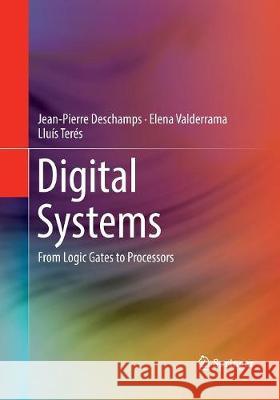Digital Systems: From Logic Gates to Processors » książka
topmenu
Digital Systems: From Logic Gates to Processors
ISBN-13: 9783319822921 / Angielski / Miękka / 2018 / 241 str.
Kategorie:
Kategorie BISAC:
Wydawca:
Springer
Język:
Angielski
ISBN-13:
9783319822921
Rok wydania:
2018
Wydanie:
Softcover Repri
Ilość stron:
241
Waga:
0.45 kg
Wymiary:
25.4 x 17.78 x 1.4
Oprawa:
Miękka
Wolumenów:
01
Dodatkowe informacje:
Wydanie ilustrowane











